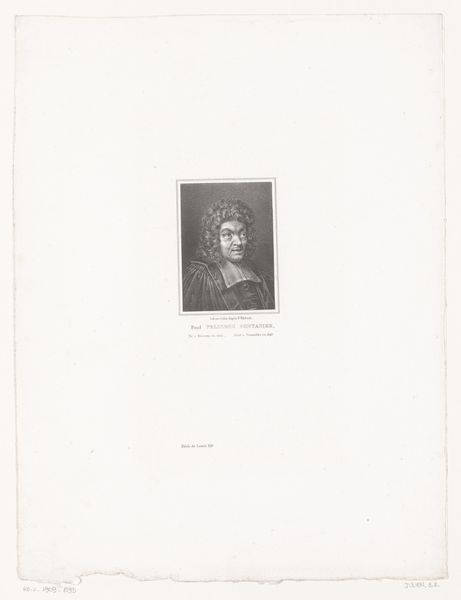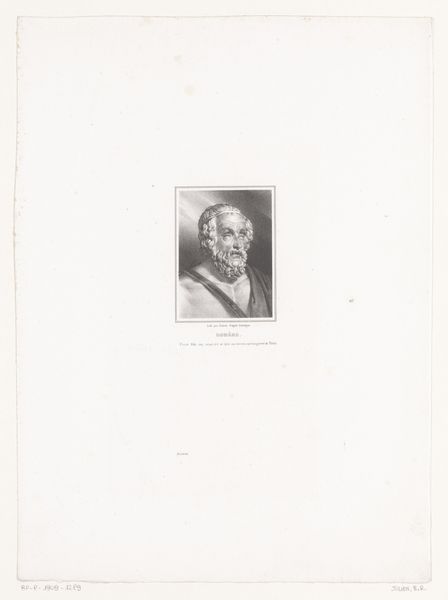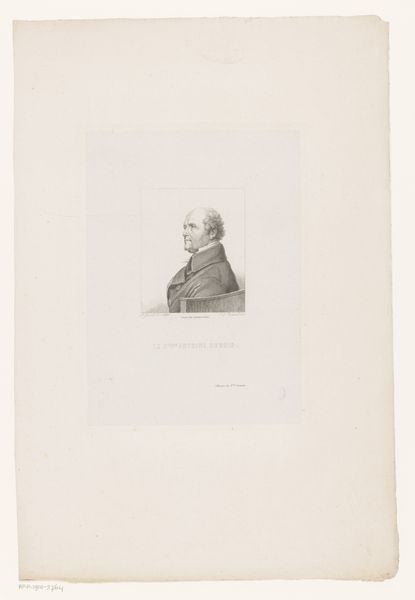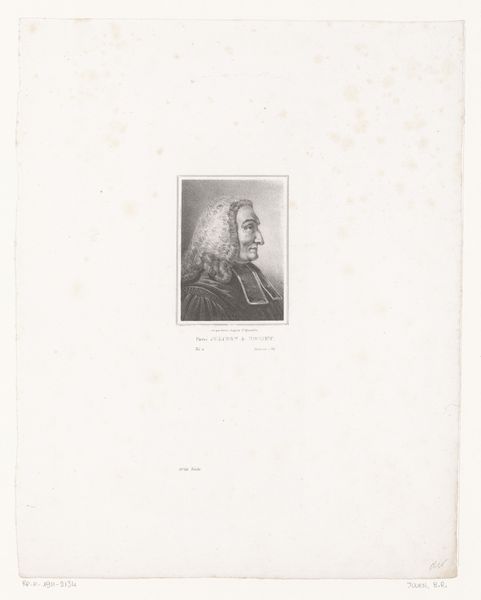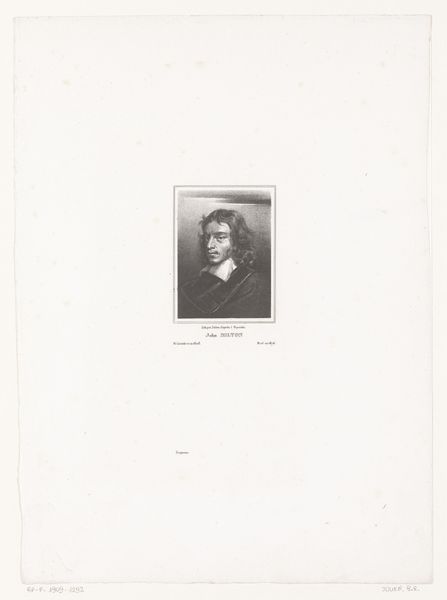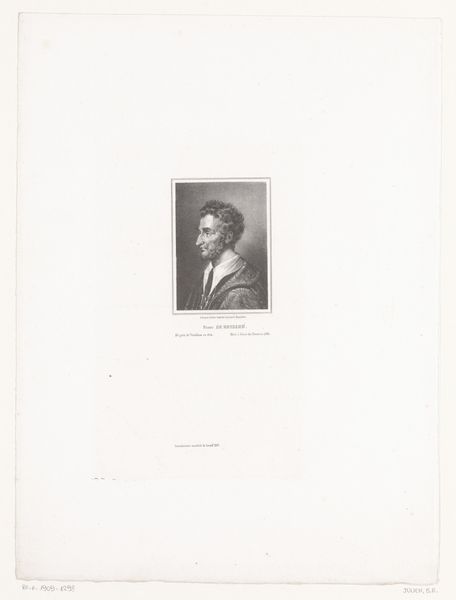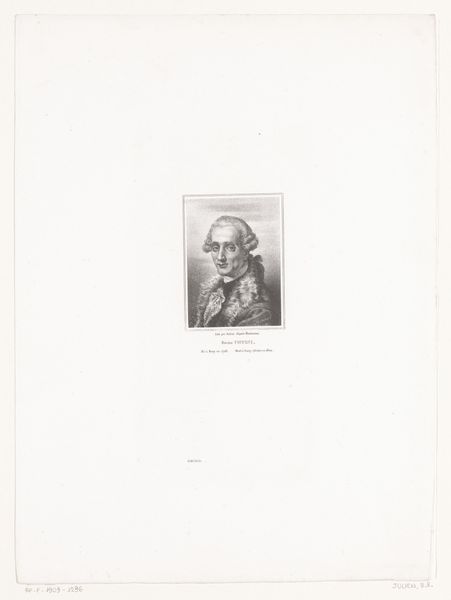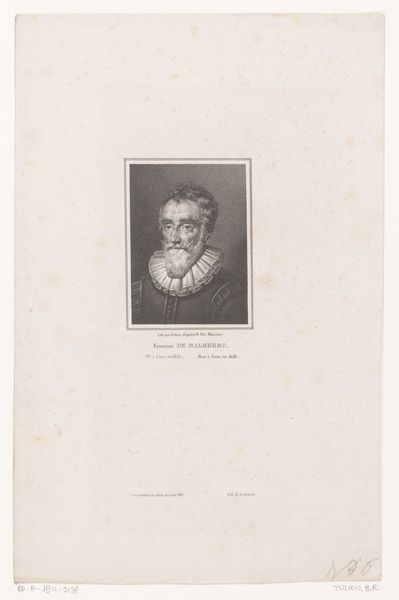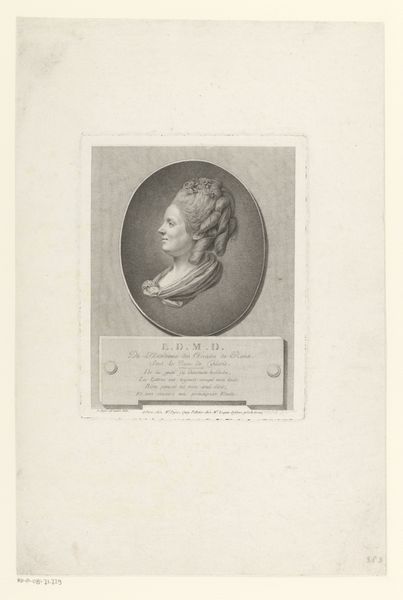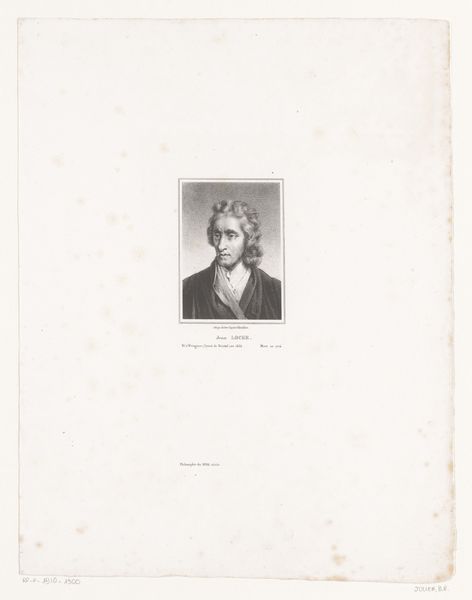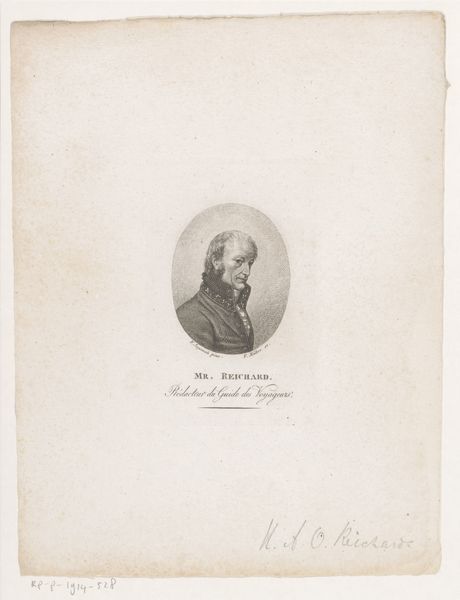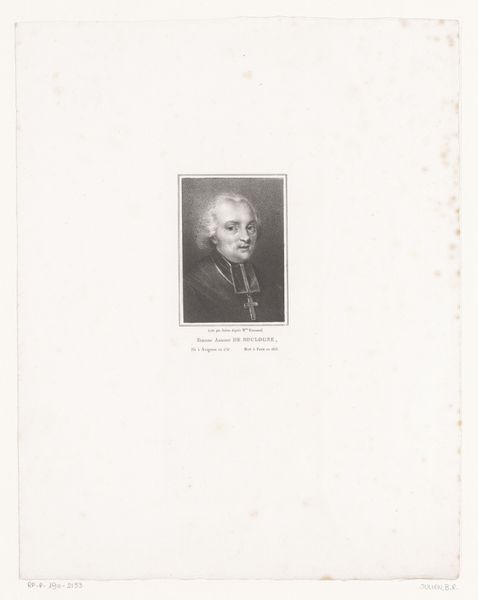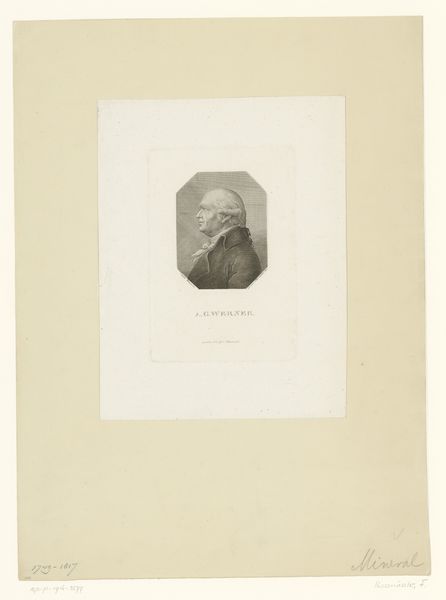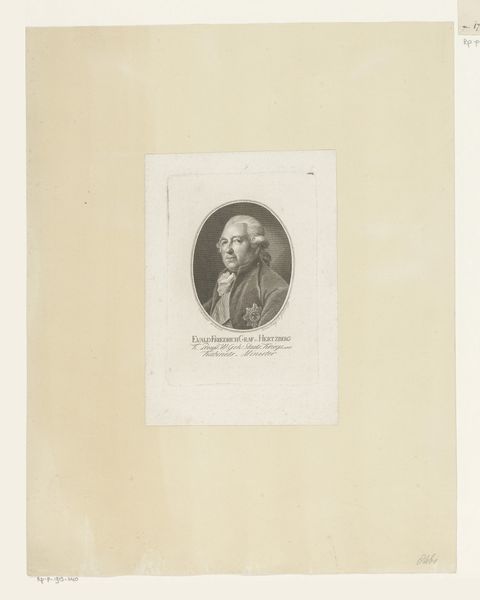
#
pencil drawn
#
photo of handprinted image
#
light pencil work
#
white dominant colour
#
pencil sketch
#
old engraving style
#
limited contrast and shading
#
pencil work
#
tonal art
#
remaining negative space
Dimensions: height 333 mm, width 244 mm
Copyright: Rijks Museum: Open Domain
This portrait of Gaius Cornelius Tacitus was made by Bernard Romain Julien, who lived from 1802 to 1871. It's made using a technique called 'lithography,' a method that democratized printmaking in the 19th century. Lithography involves drawing with a greasy crayon onto a flat stone or metal plate. The stone is then treated with chemicals so that only the drawn areas attract ink, which is then transferred to paper. This process allows for nuanced gradations of tone, which you can see here in the delicate rendering of Tacitus's features and the draping of his toga. Lithography enabled the mass production of images, making art more accessible to a wider audience, and provided graphic artists with an efficient means of distributing their designs. The relatively fast nature of lithography also allowed artists to respond to current events, and create illustrations for books and periodicals. Looking at this print through the lens of its making, it can open up questions about how industrialization affected artistic production, consumption and society.
Comments
No comments
Be the first to comment and join the conversation on the ultimate creative platform.
